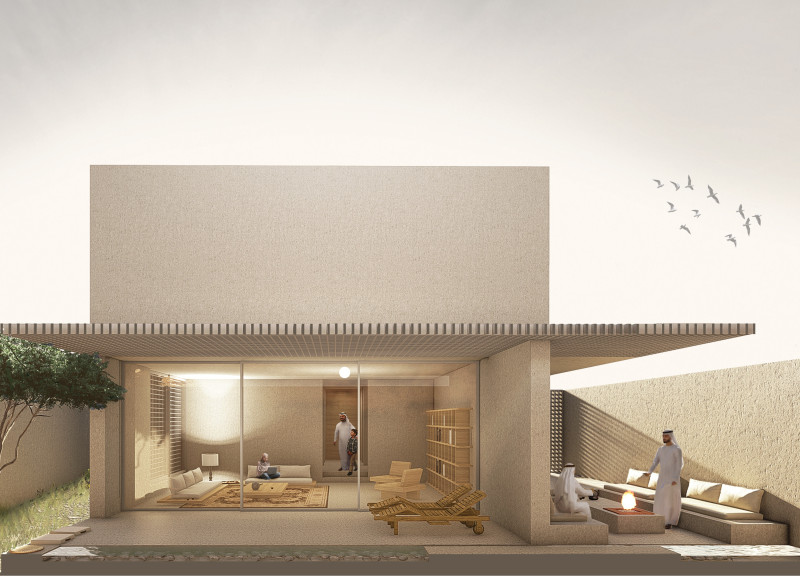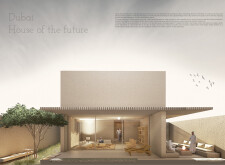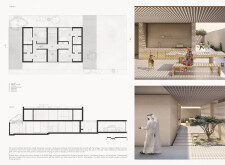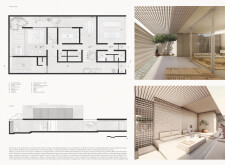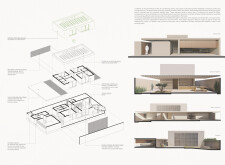5 key facts about this project
### Project Overview
The Dubai House of the Future, located in Dubai, UAE, exemplifies a contemporary residential design that balances modern needs with traditional values. This two-story family residence prioritizes themes such as privacy, community, and the integration of indoor and outdoor environments, reflecting the evolving nature of urban living. The design creates family-oriented spaces while honoring the rich cultural heritage of the region.
### Spatial Arrangement and Functionality
The layout of the residence is organized to foster interaction and connection among family members while also providing private quarters. The ground floor comprises a spacious living area, kitchen, and dining spaces that flow naturally into the garden, encouraging social interaction and visual continuity with the outdoor environment. The first floor includes several bedrooms, designed to offer individual privacy while maintaining a link to family-centric areas. Open spaces such as courtyards and shaded terraces serve multiple functions, including relaxation and social gatherings, thereby enhancing the overall living experience.
### Material and Sustainability Considerations
The project employs a thoughtfully selected material palette that reflects local heritage and supports sustainability. Traditional clay finishes provide essential thermal regulation in the hot climate, while wood elements contribute warmth and comfort. Large glass panels facilitate natural light penetration and establish a visual connection with the exterior, enhancing the sense of openness. Terrazzo flooring not only adds a luxurious aesthetic but also aligns with regional architectural traditions. The incorporation of passive design strategies, such as shading pergolas, minimizes heat and glare, demonstrating a commitment to energy efficiency and ecological responsibility. The adaptable design accommodates potential future expansion, ensuring long-term functionality for residents while balancing personal privacy with community engagement.


